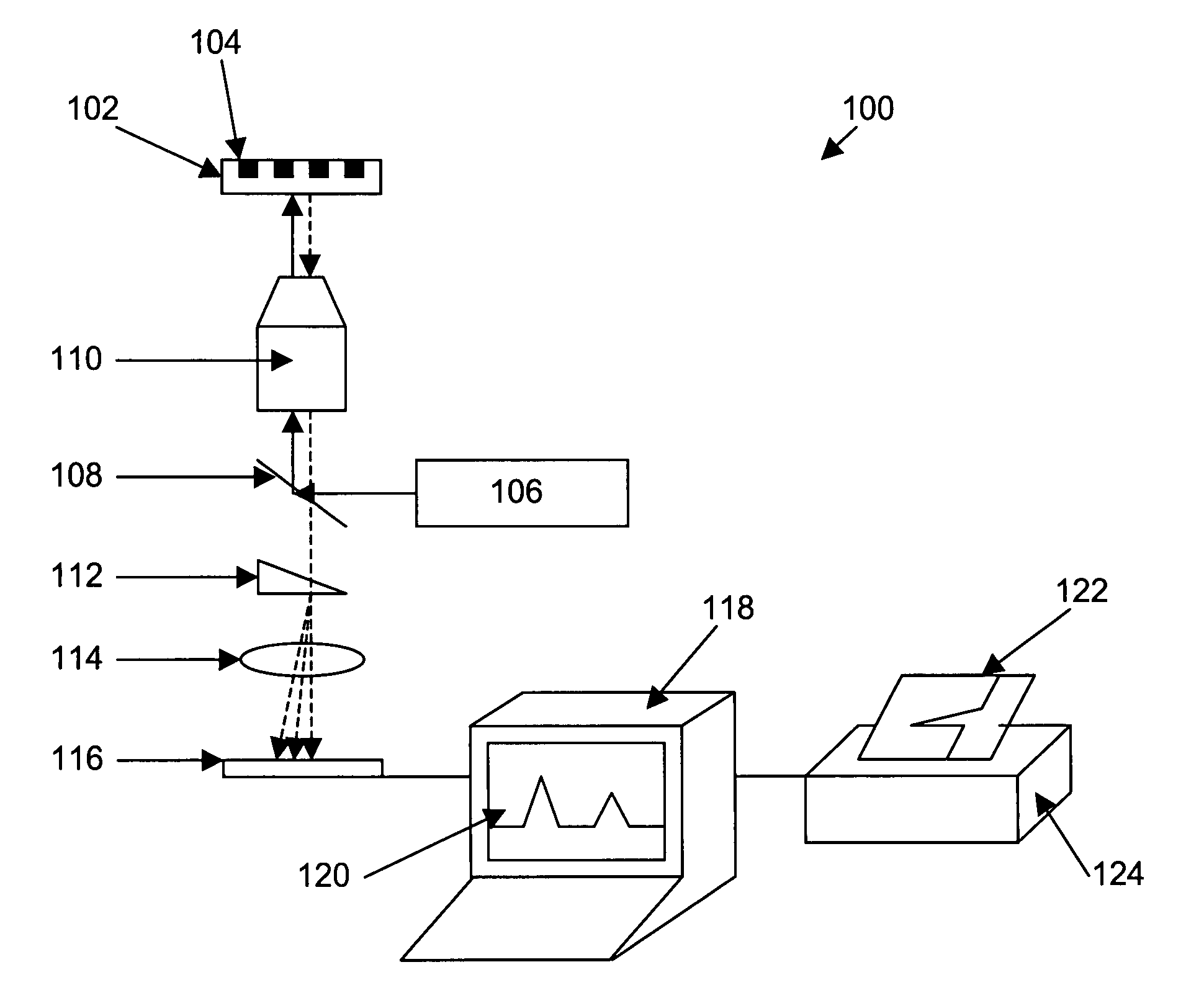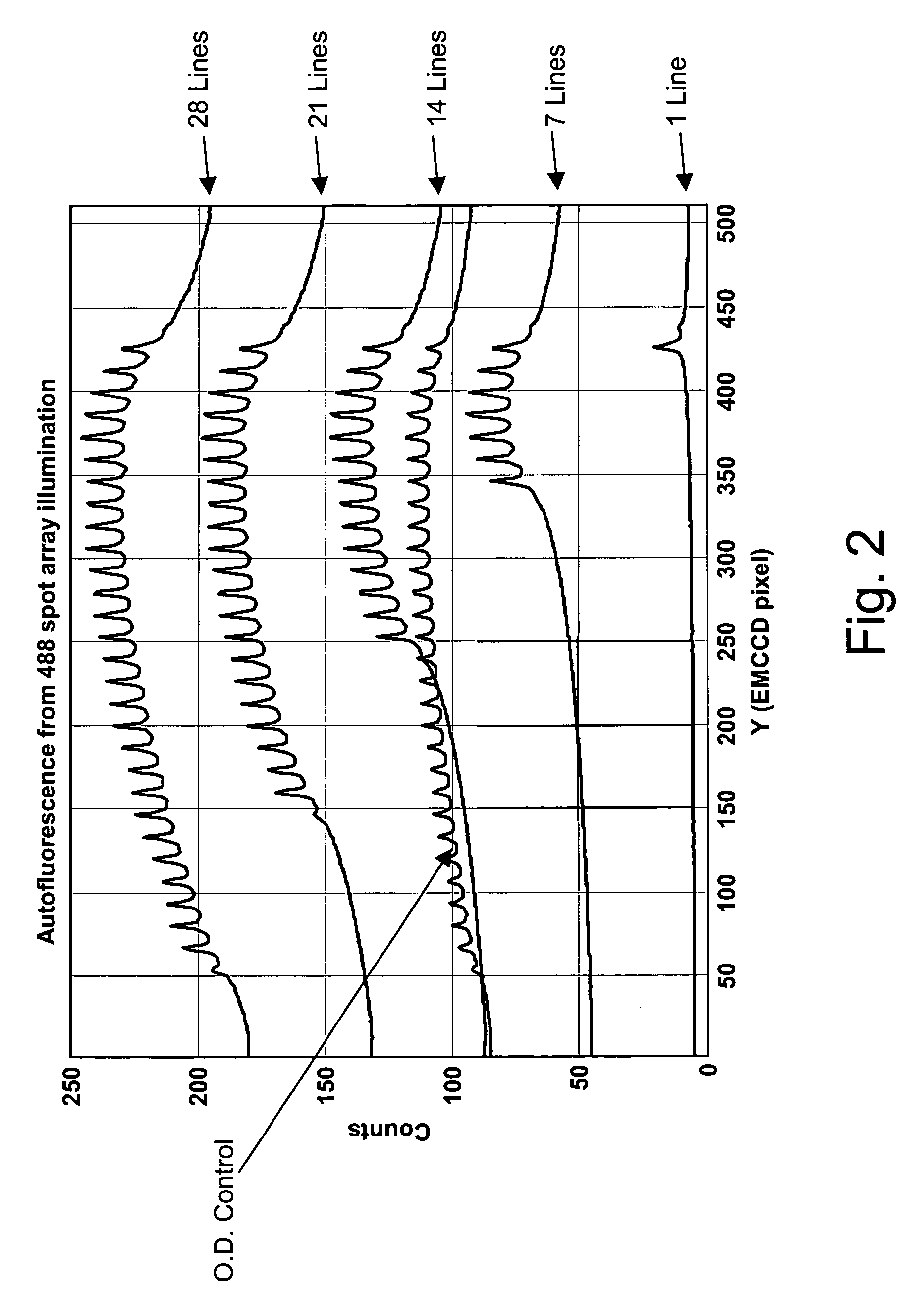Methods and systems for analyzing fluorescent materials with reduced authofluorescence
a technology of authofluorescence and fluorescent materials, applied in the field of autofluorescence background noise reduction, can solve the problems of noise levels, overwhelm relatively low reaction derived signals, and the application of these systems, and achieve the effect of improving the ability to monitor fluorescent signals and reducing background signal noise levels
- Summary
- Abstract
- Description
- Claims
- Application Information
AI Technical Summary
Benefits of technology
Problems solved by technology
Method used
Image
Examples
Embodiment Construction
I. General Discussion of Invention
[0030]The present invention generally provides methods, processes and systems for monitoring fluorescent signals associated with reactions of interest, but in which background signal levels and particularly autofluorescence background noise of system components, is reduced.
[0031]The methods, processes and systems of the invention are particularly suited to the detection of fluorescent signals from signal sources, e.g., reaction regions, on substantially planar substrates, and particularly for detection of relatively low levels of fluorescent signals from such reaction regions, where signal background has a greater potential for negative impact.
[0032]For ease of discussion, the present invention is described in terms of its application to arrays of single molecule reaction regions on planar substrates from which fluorescent signals emanate, which signals are indicative of a particular reaction occurring within such reaction regions. Though described ...
PUM
 Login to View More
Login to View More Abstract
Description
Claims
Application Information
 Login to View More
Login to View More - R&D
- Intellectual Property
- Life Sciences
- Materials
- Tech Scout
- Unparalleled Data Quality
- Higher Quality Content
- 60% Fewer Hallucinations
Browse by: Latest US Patents, China's latest patents, Technical Efficacy Thesaurus, Application Domain, Technology Topic, Popular Technical Reports.
© 2025 PatSnap. All rights reserved.Legal|Privacy policy|Modern Slavery Act Transparency Statement|Sitemap|About US| Contact US: help@patsnap.com



